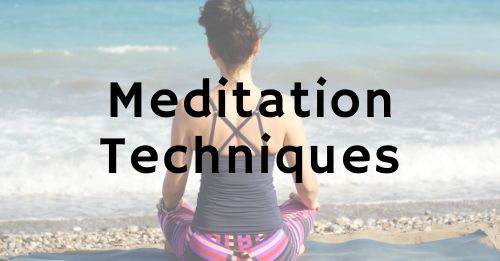As you walk out your Recovery journey, you’re bound to encounter a lot of advice on the best ways to stay sober. The most important thing is to explore different avenues of healing and to find what works for you. Holistic addiction therapies like meditation address more than just the physical cravings of addiction. Meditation is a simple practice that focuses on you as a whole person — mind, body and spirit.
If you want to give this practice a try but aren’t sure about the best meditation techniques, here is our beginner’s guide to help you get started.
What Is Meditation?
Meditation is a training approach, much like a fitness regimen, but it helps you train your mind instead of your body.
Throughout the day, your mind wanders down countless trails. In Recovery, these thoughts can be detrimental to your healing, whether they’re regrets from your past or anxiety about your future. Meditation is a tool that brings your focus back to the present moment so you can quiet your anxious thoughts.
There is no right or wrong way to meditate. In fact, each meditation technique has a common aim — breaking free from distraction, training your attention and helping you find balance and clarity in the present. While relaxation isn’t the ultimate goal of medication, it’s often the result, and the practice comes with other unique benefits:
- Lowered blood pressure and heart rate
- Slower breathing
- Less anxiety and stress
- Improved feelings of overall well-being
- And more
Steps for How to Meditate
While there are many ways to meditate, here is the most straightforward method to get you started:
- Find a comfortable place to sit or lie down.
- Close your eyes.
- Breathe naturally. Don’t try to control your breath.
- Focus your complete attention on your breathing, examining how your body moves as you inhale and exhale. Notice each movement, observing your chest, rib cage, belly and shoulders.
- If your mind begins to wander, just bring your attention back to your breathing.
- To start, maintain this simple meditation practice for about two to three minutes. As you progress, you can try it for longer periods of time.
Different Types of Meditation
There is a wide variety of meditation techniques, with many teachers and schools of thought. Within these different types of meditation methods, there are also subtypes. It’s completely fine to blend these varying meditation approaches and test different ones to find what works best for you.
Here are some of the most popular types of meditation.
Mindfulness Meditation
Mindfulness meditation encourages you to remain aware and present within the moment. Instead of dwelling on past or future events, mindfulness urges you to focus on your existing surroundings. One of its most crucial components is a lack of judgment for any thoughts that may come into your mind. You’re encouraged to be aware of these, examine them, and then release them without deciding whether they’re good or bad.
Concentration Meditation
This form of meditation is designed to increase your ability to concentrate by focusing on a single point. You may be asked to give your full attention to a focal point like your breathing, staring at a candle, listening to a soft sound or repeating a single word or phrase. Each time your mind wanders, you let the random thoughts go.
Loving-Kindness Meditation
Addiction can deeply impact your ability to empathize with others. Loving-kindness meditation, also called Metta meditation, helps you cultivate love and kindness toward yourself and others, even people who have hurt you or caused you stress.
While breathing, you open your mind and send messages of loving-kindness out to the world, including specific people. You also open yourself up to receive love and kindness.
Body Scan Meditation
Also known as progressive relaxation, this form of meditation encourages increased awareness of your body, especially areas of tension and stress. During these meditation sessions, you scan each part of your body, usually starting at your feet and working your way up. As you notice tension, the goal is to release it and improve your overall relaxation.
Learn More Clinical and Holistic Recovery Techniques at 7 Summit Pathways
At 7 Summit Pathways, we are personally vested in your health and wellness as we assist you during your Recovery journey. Meditation is just one of the holistic tools we employ to help our patients feel less stressed, become more accepting and find greater peace. Our goal is to develop a personalized approach to your care that builds a strong foundation for your long-term success.
If you would like to learn more about our state-of-the-art treatment plans and methodologies, we invite you to contact us here or schedule your appointment at 7 Summit Pathways.

